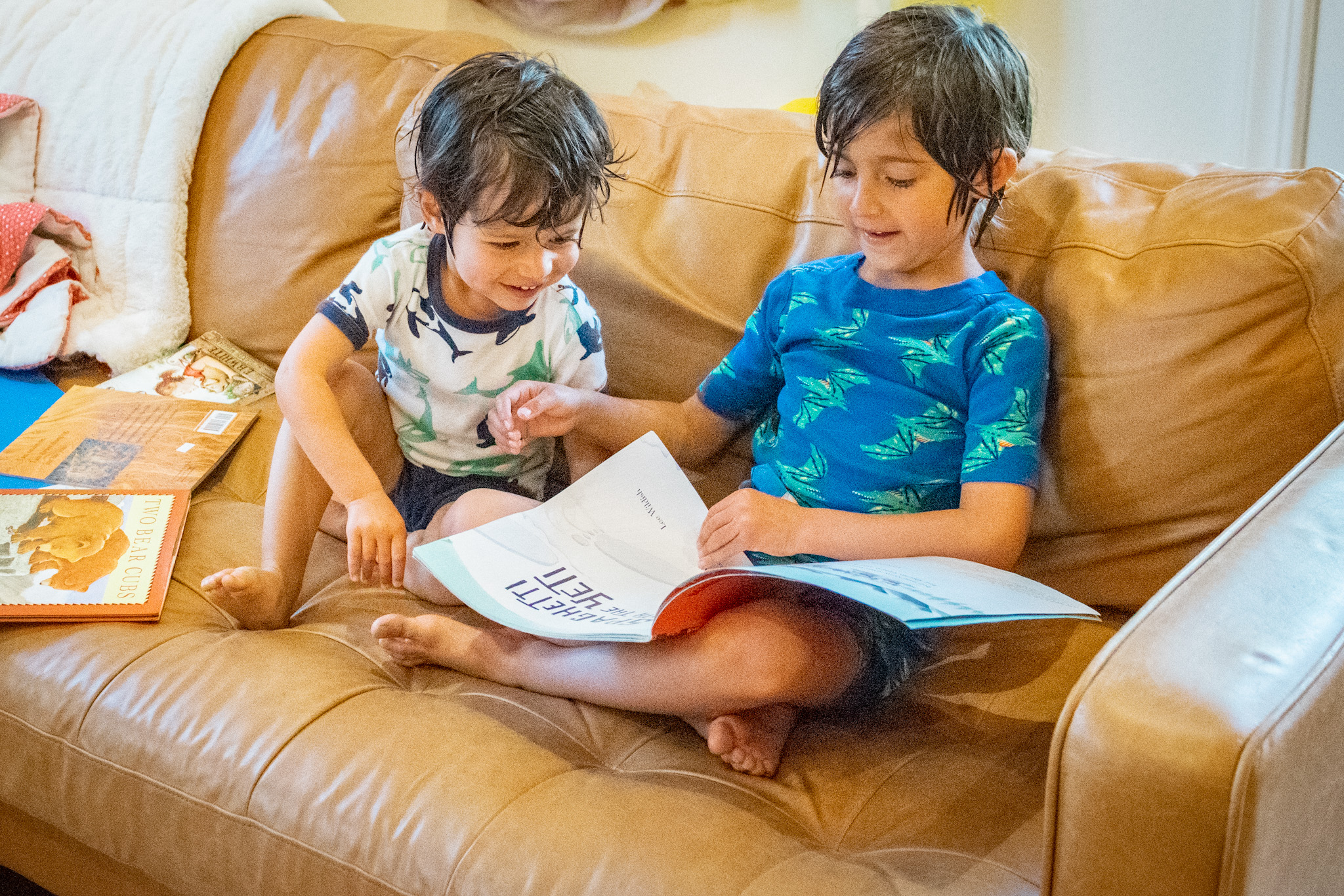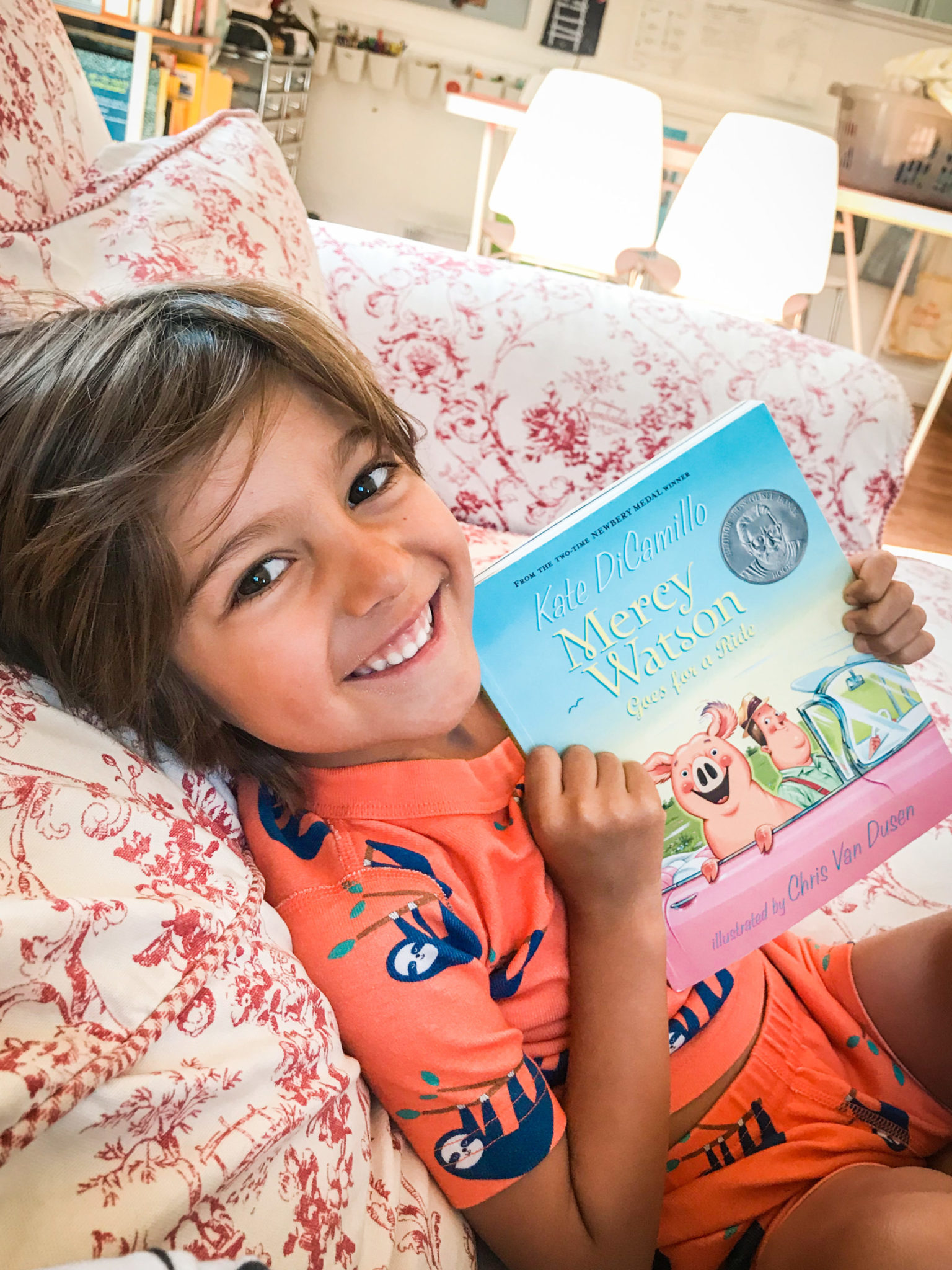Over the past 5 years, I’ve spent a fair amount of time teaching kids to read. Not only have I taught my older three kiddos (now ages 9, 7, and 5), but I’ve also helped out in their classrooms specifically with phonics, sight words, blended sounds and other early reading skills. Basically, I’ve spent a lot of time with pre-reading and early reading materials.
This post about teaching kids to read contains affiliate links, but all opinions are 100% my own. That means I earn a small commission if you purchase through my link, but doesn’t change your price.
What Age To Start Teaching Kids to Read
This is one of those parenting questions that annoyingly comes with the answer, “It depends.” By and large, exactly what age your child learns to read does NOT strongly correlate with how strong they are at reading, how much they enjoy it, etc. It’s certainly far more important to have your child love reading than to make reading a battle.
Frankly, if it doesn’t work for your home and your relationship, you don’t necessarily even need to teach your child to read at home! It’s certainly not a parenting requirement, and plenty of children do great learning to read at school with a teacher that’s not a parent.
If, however, you decide you’d like to be the one to teach your child, our family has found a few advantages to teaching kids to read (in a low-key way) on the earlier end.
Advantages to Teaching Kids to Read Early
Builds Confidence in Identifying as a Reader
I’ve found that giving my kids early confidence in reading actually helps them enjoy it more. They see themselves as successful readers, and it becomes part of their identities. When they put in a little bit of consistent effort early on, they notice that it becomes easier, and that builds their confidence and interest in continuing.
Capitalizes on Kids Being Willing to Try New Challenges
When kids enter kindergarten, there are a lot of changes going on. I find my kids tend to come home more tired, so it’s harder to fit in reading practice later in the day. They also may be fearful of challenges that didn’t bother them before because of everything else going on, or because that’s the social norm. I like using the window of opportunity before my child is in full-time school to start working on some basic reading skills, before they’re influenced by peers to think reading is too difficult or not fun.
Channels Excitement
I find that most preschool-aged kids tend to love stories! They’re fun to hear and recite. And they often get really excited to feel responsible by building some of those reading skills themselves at that age.
Helps Them Love Reading
Obviously, this is one that could definitely backfire if you push too hard. Reading SHOULD be fun, and I never want it to feel like an absolute chore. Still, most of us tend to enjoy the things we’re good at. That’s true for kids, too.
I find that early reading practice is not often super exciting and fun. It requires work. But once they get to that point when it clicks and they can read a bit more fluently? It is so dang exciting, both for them and for you. I love seeing my kids get to that point, and they love getting there. It’s thrilling and they’re often super anxious to continue their reading journey.
With those reading skills, it becomes easier to just pass them a book when we’re in the car, waiting in line, or for them to sit and read quietly in class or at home. That, in turn, leads to further practice and even more excitement and love for reading. It’s a terrifically virtuous cycle.
Both my older two are voracious readers, and I attribute that in part to having had several years of solid reading behind them. We all definitely tend to enjoy the things we feel we’re good at. Giving them time to practice getting there is helpful.
Disadvantages to Early Reading
Like anything, there are definite disadvantages to starting young, as well. As a violin teacher, there are certain benefits to starting young (e.g., intonation/hearing sounds comes naturally to a lot of young children) and also disadvantages to starting young (gross motor skills require more work). The same is true with reading.
For one, it just takes a lot longer to teach a 3 or 4 year old to read than to teach a 6 or 7 year old to read. It takes more practice and patience and consistency. It can also be tricky to match content to age as kids become more fluent readers.
Finally, a younger child will have much less of an attention span than an older child, which could become frustrating for both child and teacher. Which is why I always recommend looking first at those pre-reading skills (below), and NOT FORCING THINGS. There is zero shame if your child isn’t quite ready. If it feels like it’s not working, give it a break and try again later.
How Do I Know When To Teach My Child to Read? Reading Readiness Skills
I usually look for a few pre-reading skills before teaching kids to read in a low-key manner. Here’s what I like to look for:
- Interest in words and a recognition that the letters on the page of a book form the words and sounds
- Ability to sit still to listen to a book for 15-20 minutes
- Interest in retelling stories
- Print awareness – the child recognizes that there are words on the page that tell a story, and may like to recite them back to you
- Rhyming: child understands simple rhymes
- Interest! Don’t underestimate the power of this one.
Not every single one of these is necessary (and there are certainly other pre-reading skills, as well), but I find these tend to give me a general idea if my child is approaching reading readiness.
Doing Reading Practice: Consistency is Key
Again, hearkening back to my violin teacher life, I always tell my students that it’s better to practice for 10 minutes every day than two hours on the day of the lesson. The same is true with teaching kids to read – consistency is key.
Even if they each look a bit different, we try to incorporate a bit of reading practice into each day. That might look like doing a lesson (more below), looking at some sight words, or having my child read a page from a picture book I’m reading aloud. Whatever it is, it builds confidence and fluency.
Reading practice is also something I include on my 5-year-old’s family economy list so it’s more likely to happen every day.
My Favorite Materials for Teaching Kids to Read
While teaching kids to read can vary greatly from child to child – including each of my kids – I’ve found a few materials to be consistently helpful. That’s not to say that they’d work for every child, but I’ve found that they are useful for a majority of children. Stay tuned tomorrow for our favorite materials, as well as at what stages we use them!
IF YOU LIKED THIS POST ABOUT TEACHING KIDS TO READ, YOU MIGHT LIKE THESE POSTS TOO:













[…] miss Teaching Kids to Read Part 1/3: What age our family starts teaching kids to read, and what reading readiness skills to look […]
[…] you dig into these resources, be sure to check out this post on what age to start teaching your child to read, as well as the best books to teach […]